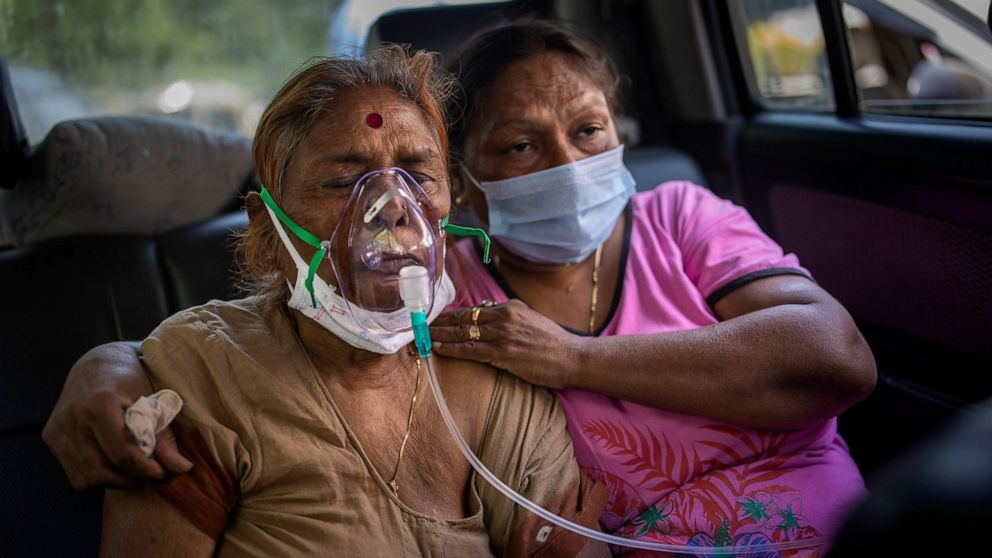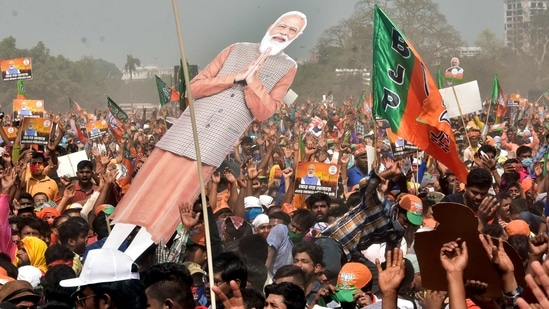In the midst of all the pandemic mayhem in India and especially in Delhi, which has been under a lockdown since April 19, the Central Vista project which includes a new Parliament, a new residence for the Prime Minister and the Vice President and other government offices got the green clearance so that construction work can carry on despite ‘virus lockdown’.
The Central Vista project has been severely criticised by opposition parties and activists as it entails demolishing historical buildings of Delhi which are a significant feature of its architectural heritage and appropriating public land.
The Central Vista project has been severely criticised by opposition parties and activists as it entails demolishing historical buildings of Delhi which are a significant feature of its architectural heritage and appropriating public land. That this has been sanctioned in the face of a humanitarian crisis caused by the system’s mishandling of the pandemic and a healthcare system that is struggling, is another important factor that has contributed to the criticism of the construction project. Is the race to photoshop India as this invincible figurehead, the “Vishwa Guru” going too far? Is the politics of appropriation, erasure and re-creation, whether it is of people, places or narratives happening on the sly? The intention seems to have been to weave into the powerful and tempting narrative of presenting India as a world leader, a nation as strong and masculine as its Prime Minister who stands tall and proud with a 56-inch chest braving hell’s fury, hostile neighbours, resistance movements, farmer protests and a dying populace.
Also read: The ‘Frustrated’ Indian Politics: Patriarchy’s Need To Control Women’s Bodies
The photoshopped India needs to be perfect – it can’t as much as twitch an eyebrow at the predicament of its baffled citizenry. So what are the cultural icons that help reinforce this very macho projection of India and why are they so desperately needed even in the grimmest of hours and the direst of times?
We have the dauntingly, overwhelmingly towering Sardar Patel Statue, or the Statue of Unity which is as much a saga of political appropriation as it is of India’s masculine pride and stride in the world arena. When Hindutva enthusiasts and other unsuspecting tourists crowd to see this magnanimous architectural feat ironically overlooking the Sardar Sarovar or the Narmada Dam Project, they are so blinded by the magnificence that they fail to see the brazen environmental oversight and calamitous displacement of people it caused, the ecosystem it uprooted, the livelihoods that were lost, the homes that were destroyed and most of all the money that went into this colossal endeavour. But it is after all for the greater good, for the greater optics on the international stage on which India needs to be seen as a star performer. To show the world that India is as formidable as the statue that stands. That India values a monolithic identity over a pluralistic, multicultural one. Never mind that this tourist attraction is at the expense of lakhs of invisible adivasis (indigenous tribals) whom the Indian nation state has systematically reduced to squatters on their own land ever since independence, except this time like in the case of the Sardar Sarovar Project they were forced to flee.
But why am I raging over a statue in the middle of a nightmarish pandemic? Because it is happening again: Because it is a pattern and it has gained hideous proportions like the coronavirus. It mutates in different ways at different places and people continue to refuse to take it seriously.
We are in the middle of a global humanitarian crisis that proved with the first wave itself that it had the ability to send us back in time, a crisis that brought world economies to a standstill, led to a collapse of our infrastructure and our healthcare system, perplexed the scientific fraternity and managed to make us realise that we are, but nondescript and miniscule beings. This was a crisis that shoved us rudely and without any warning even as we were just beginning to get our heads around it — a crisis compelling us to acknowledge our finitude and what’s more important.

And as if last year wasn’t bad enough, this year has been a veritable nightmare with absolute mayhem and all hell breaking loose. Cities, towns and even villages of India are witnessing the horrible onslaught of COVID-19 as it continues to devour lives. I speak to my friend over the phone who had to be moved from Agra to Delhi and was on oxygen for 10 days because hospitals in Agra refuse to hand over the test report if you are positive so that statistics do not look bad. He speaks of chimneys of electric crematoriums melting and of the unimaginably long waiting time to cremate people. He speaks of doctors losing their children because of unavailability of oxygen, of even the VIPs and the VVIPs who have passes to every important place across the length and the breadth of this country dying in parking lots of hospitals waiting for a bed in the capital of India.
I can more than imagine, because a fortnight back we were moving heaven and earth to arrange vials of Remdesivir for my mother-in-law in Nasik when the hospital clearly said that it had no supply of the medicine and was not likely to get any. We had to subsequently procure it from Mumbai at eight times the actual cost. One might actually believe that in all of this, our most masculine state, with its invincible projection (and god complex), which has enough money to pump for landscaping and creating cultural icons for business of nationalism and re-imagining nation along the lines they think important, would be consistent with its staging and take exigent steps in doing whatever it can to at least put the failing healthcare system on makeshift crutches.

Instead what we see is a clearance and a boost to the controversial Central Vista project which apparently is far more important than procuring oxygen cylinders or life-saving drugs for an incapacitated population or making COVID vaccinations affordable to the general populace.
Instead, what we saw was all energies singularly invested in election rallies in Bengal and indifference towards the Mahakumbh at Haridwar, where lakhs of Hindus spread the virus. Instead what we see is a clearance and a boost to the controversial Central Vista project which apparently is far more important than procuring oxygen cylinders or life-saving drugs for an incapacitated population or making COVID vaccinations affordable to the general populace. It is worth giving a thought to the source of such brazenness, such hubris on the part of the state. It is the same hubris that allowed for the Statue of Unity to come up at the expense of lives that are clearly expendable. It was the adivasis then, it is the expendable and the not-so-expendable opinion-making middle class now, but who cares? Collective memory does not last long. Monuments do. Collective memory can be manipulated and conditioned by hyper-active news anchors pointing at monuments that weather rain and storm to narrate the tales of a glorious empire. The dead don’t rise and speak but statues, bullet trains, stadiums and buildings certainly will.
Also read: ‘Didi…O…Didi’ — Sexism Aplenty In West Bengal Assembly Elections 2021
So what if the healthcare system lies exposed, the medical infrastructure is in shambles: we as a nation have a certain projection; we cannot afford to look weak. The banal show of a lavish and obscene creation of a barely needed Secretariat and PM residence amounting to a projected expense of approximately Rs. 14,000 crores must go on even as people fall like ninepins in the distant, COVID-19-infested background.
This compulsion to desist from showing any display of concern for citizens must apparently go on, for a nation is mostly about borders and territory and hardly about its citizenry. A nation is about fighting wars and winning them by amassing land, not about battling a disease and saving lives. The new India is about standing tall, taller than anybody else in the whole world, not going down on its knees to help its afflicted. The new photoshopped India is about a little blood-letting, about showing its citizens the spirit of sacrifice for the greater good, the promise of a Hindu Rashtra even if it stands on corpses of pronouncedly lesser mortals. Of course, it is about the survival of the fittest and you thought it is about equality, equal rights, equal opportunities and equal care? Wouldn’t spare a penny for your thoughts.
About the author(s)
Dr. Shyaonti Talwar is an academician, researcher and a writer whose areas of interest include popular culture, social inequality, literature, mythology and gender. A poet and a performing artist, she loves creative expressions and feels it is important to voice her critical observations. Writing is therapeutic for her and makes her feel awake and alive. She can be found on LinkedIn and Twitter.





I agree with every word. We all need to take a stand rather than watch with numb horror. More power to you!